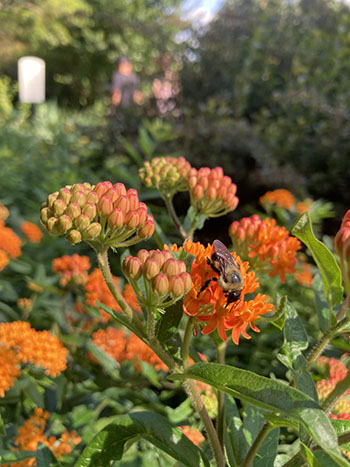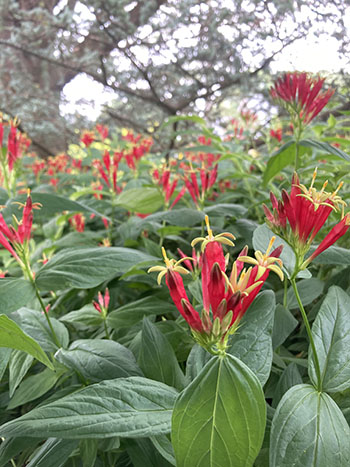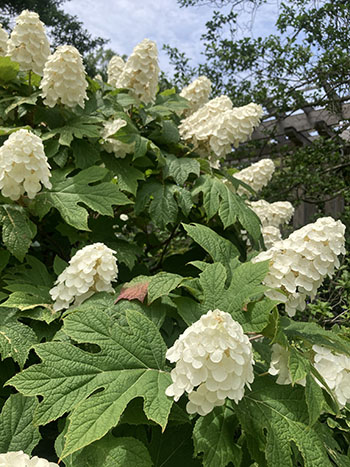
Plants of Week: June 20
Guest Author: Summer Intern Adam Torneo

Asclepias tuberosa is a species of milkweed native to North America. Also known as butterfly weed, this herbaceous perennial attracts numerous pollinators with its showy orange flowers and abundant supply of nectar. Its flowers also serve as an important larval food source for many insects, including queen and monarch butterflies. Butterfly weed thrives in direct sun and dry, nutrient poor soils, making it an excellent choice for the edges of your garden, adding both vibrant color and essential ecological services to the landscape. Find Asclepias tuberosa in the Terry Shane Teaching Garden. Photo credit: A. Torneo

Spigelia marilandica, or Indian pink, is a native perennial that feels most at home in a woodland’s understory. But there’s no doubt that its luscious foliage and tubular red inflorescences also have a place in the garden, particularly in the moist, shaded areas beneath trees and shrubs. The star-tipped flowers bloom in early summer, and are known to attract hummingbirds. Find Spigelia marilandica in the Scott Entrance Garden in the shade of our blue atlas cedar. Photo credit: A. Torneo

Hydrangea quercifolia is a versatile shrub offering numerous points of interest through all seasons. Easily identified for its oak-like leaves and large white panicle inflorescences, the oakleaf hydrangea remains attractive even through the winter. Long after the flowers and showy autumnal leaves have gone, it’s time for the woody stems to steal the show: gold and reddish brown in color, their rich exfoliating strips of bark resemble that of a river birch. Find Hydrangea quercifolia throughout the Terry Shane Teaching Garden. Photo credit: A. Torneo





No Comments